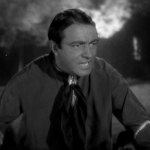 |
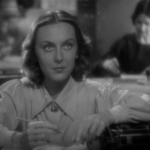 |
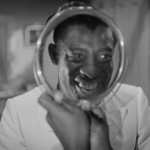 |
| Joe Thunder Horse … Richard Barthelmess |
Lydia … Ann Dvorak |
Sam … Clarence Muse |
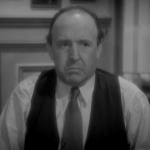 |
 |
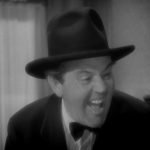 |
| Quissenberry … Dudley Diggs |
Dr. Turner … Arthur Hohl |
Shanks … Sidney Toler |
Proof That It’s Pre-Code
- Oh, hey, it confronts racial prejudice and social issues in that Warner Brothers “let’s be as sensationalistic as possible” way.
- There’s definitely a fade out to some miscegenation, with several other eager participants all around.
- Surprisingly, the film also takes on how missionaries had been trying to destroy the Indian’s history and traditions as well.
Thunder Horse: “No one interferes with your religion.”
Quissenberry: “What’s good enough for the white man is good enough for you!”
- Yeah, I know Prohibition was long gone by the time this showed up, but you have to admire how callous this part sounds:
“Norma’s bored.”
“That means she’s sober!”
- A major plot point revolves around an interracial rape and ‘the unspoken law’.
Massacre: The Century of Progress
“Get this junk off me.”
I spent a couple of days this last week reading Yunte Huang’s Charlie Chan: The Untold Story of the Honorable Detective and His Rendezvous with American History, a book that not only delves into the formation of the fictional detective, but the history of Chinese-American relations in the early part of the 20th century. Huang talks about how ‘Tribalism’ infected the politics of the 1920s: as prosperity came to America, America wanted to make sure that white Americans were getting their more-than-fair share.
One of the items discussed was a 1932 incident in Hawaii called The Massie Affair. A white woman accused five islanders of gang rape. The case was full of holes and, despite being under the threat of a military coup and public outrage, the case was a mistrial. This resulted in the mother of the woman kidnapping one of the accused and murdering them. The trial was a sensation, and the result of a guilty verdict threatened in race riots and mass lynchings. To satiate the whites in power, the Governor overrode the judge’s ruling, and the woman and her accomplices who murdered an islander were sentenced to 1 hour of sitting in the Governor’s office, sharing drinks.
I talk about these things because while it’s fun to get caught up in the glamor or the pain in the films of the early 1930s, it becomes very easy to overlook just how incredibly shitty it was for minorities in that era.

What, me worry about my culture’s systemic oppression?
One minority that it was always incredibly shitty for were, of course, the Native Americans. Like a lot of times when indigenous populations met up with ruthless capitalists, things ended poorly. By the end of the 19th century, the proud tribes of American Indians were contained to reservations and regulated by the Federal government. Their schools were manned by Christian missionaries, and the teaching of their culture forbidden.
Into this cheery world enters Warner Brothers and director Alan Crosland. Warner Brothers had had a lot of success tackling social issues in movies like I Was a Fugitive From A Chain Gang and The Mayor of Hell, and one of their stars, Richard Barthelmess, was always chomping at the bit to make a statement.
Massacre is the result, and, despite the sensational sounding title and the plentiful action contained within, it’s not about an out and out battle between the Indians and the white man, but how the white man was exploiting the Indian and leaving them to rot away into nothing.
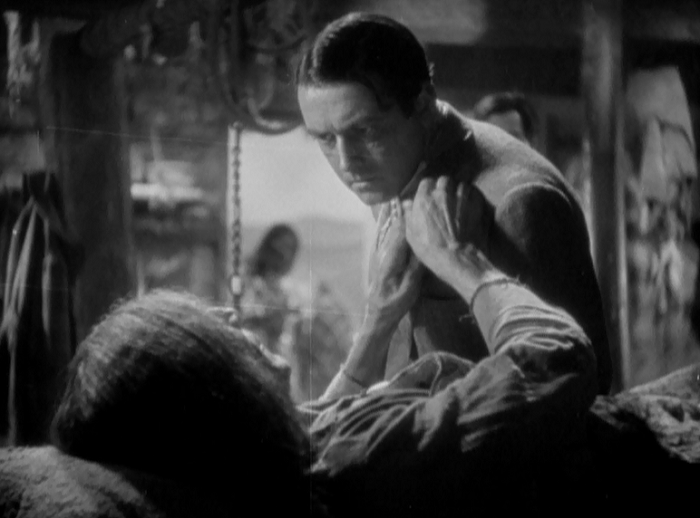
“Beware of the white man… what do you mean, which one?”
The film’s pretty clever about this. Our protagonist is Joe Thunder Horse, a sharpshooter in a traveling Wild West show. He’s flanked by noble warriors and demonstrates his skills dressed in traditional garb, though that goes away once he gets off the stage. Thunder Horse is a modern man who prefers suits, fast cars, and beautiful white women. His latest conquest is the wealthy Norma (Claire Dodd), who has a room full of Indian paraphernalia that Thunder Horse doesn’t recognize. He left home at a young age, went to college, and went on to become famous as the popular ideal of what an Indian was.
But now he’s gotten a message that his father’s dying. Packing along his good friend Sam (Clarence Muse), he heads to his native reservation. There he finds that a cadre of white overseers have arranged to split the money and land that the Native Americans have and perpetuate the reservation’s poverty. The Indians we see are filthy, broken people, and the whites chubby and quite satisfied with themselves.
Spurned into action by another college educated Sioux named Lydia (Ann Dvorak), Thunder Horse soon finds that he can’t help but push back against the indignities he sees. He breaks up a fake ritual put on for a commercial. He punches the corrupt doctor in the face. When his father passes away, he arranges traditional burial rites, further pushing the corrupt officials towards a confrontation.
During his father’s funeral, the shady casket salesmen Shanks (Sidney Toler) takes Thunder Horse’s sister Jennie outside and rapes her. Thunder Horse chases him and, using his roping skills, drags Shanks behind his car. After a brief trial in a kangaroo court (his lawyer pleads guilty against his wishes, the judges take their orders directly from the prosecutor), and Thunder Horse sentenced to 90 days hard labor and to remit all of the money on his person.
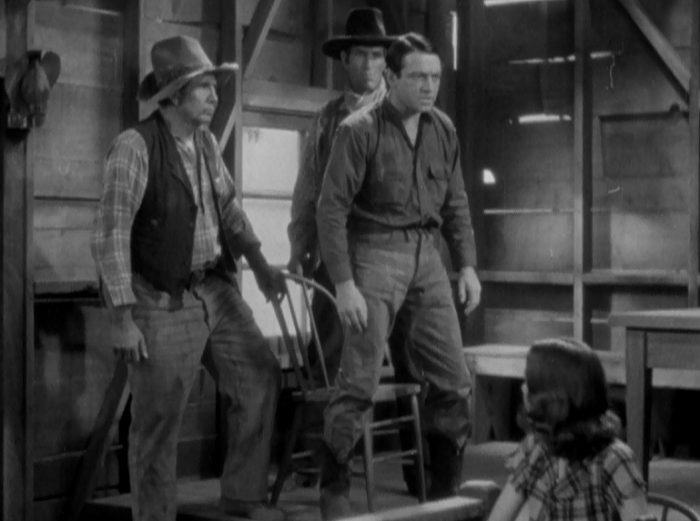
Richard Barthelmess stands tall! Or about as tall as Richard Barthelmess stands, I mean.
Not really content with this, Lydia and Sam help Thunder Horse escape, and he winds his way to Washington. There he confronts the Commissioner of Indian Affairs, who wants to use him as an example to enact real change on how the government controls Native American lands. The only problem is that Shanks has passed away, and now Thunder Horse must return to the reservation to face the angry white men who he has so far defied…
Massacre is a nuanced yet bombastic film about racial relations in the early 1930s. However, it’s still a product of the time it’s made– Thunder Horse and Lydia are both played by white people, as the tradition was at the time. It’s also worth noting that both of those characters are college educated, indicating that they still need this white man’s institution to be able to lead, though the film is polite enough not to say that directly.
But Massacre remains a fast paced and action packed film that avoids turgid melodramatics in favor of over-the-top social commentary. Thunder Horse’s evolution from a joke of the Indian image into the man who can lead his people is exciting and dynamic. The movie contains a lot of great outdoor shooting, and director Crosland imbues the movie with vicarious thrills as the certain-to-be mostly white audience finds themselves not rooting along racial lines, but for justice and dignity.
I still have a lot more to say about the film. Follow along in the next section where I illustrate some of the film’s more interesting points.
A Visual Breakdown
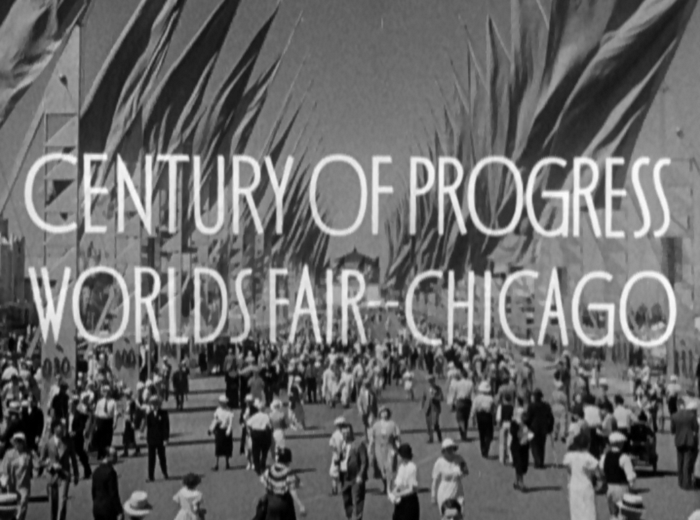
The film’s opening shot. The phrase “Century of Progress” is laced with irony as we’ll soon see.
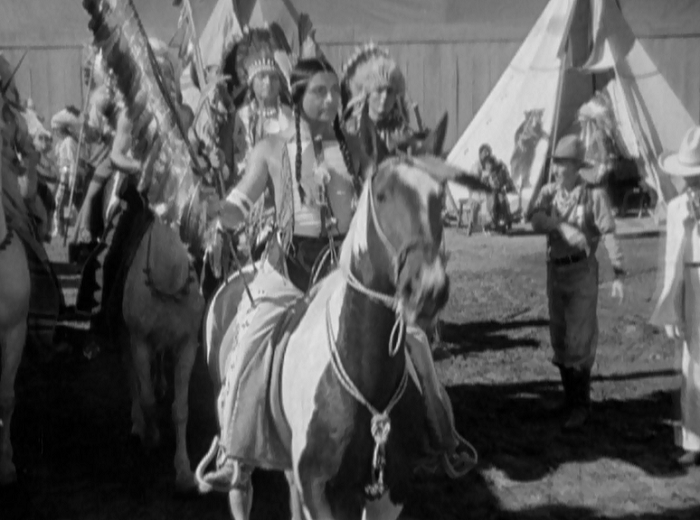
Our first shot of Indians is this, the typical pop culture image of the time with our lead, Thunder Horse, at the front. This noble ideal will be contrasted later in the film, as white Americans still see Indians this way and buy into this fantasy of the people they conquered.
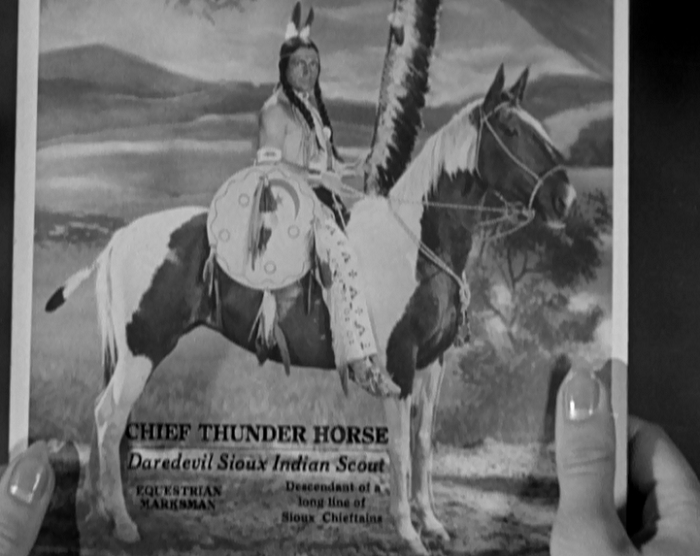
Merchandising! Here’s Thunder Horse’s portrait that’s sold to an eager crowd. Check out how fake that background is.
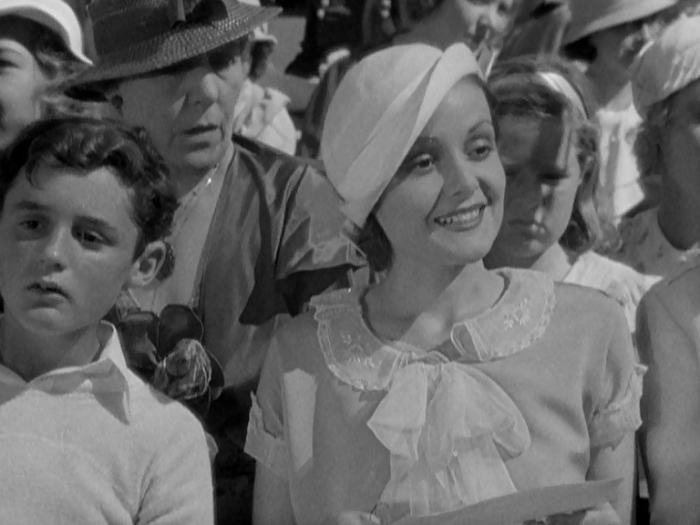
This is the lovely lady who notes, “I’ll be that big chief’s squaw– anytime.” Here mother behind her scolds her for talking about that towards an Indian man, quickly summing up both the allure and repulsion whites felt towards other races.

After he’s finished with his sharp shooting, Thunder Horse can’t wait to take off the fake hairpiece and gear. He even has to wash the traditional Indian away by jumping straight into the shower.
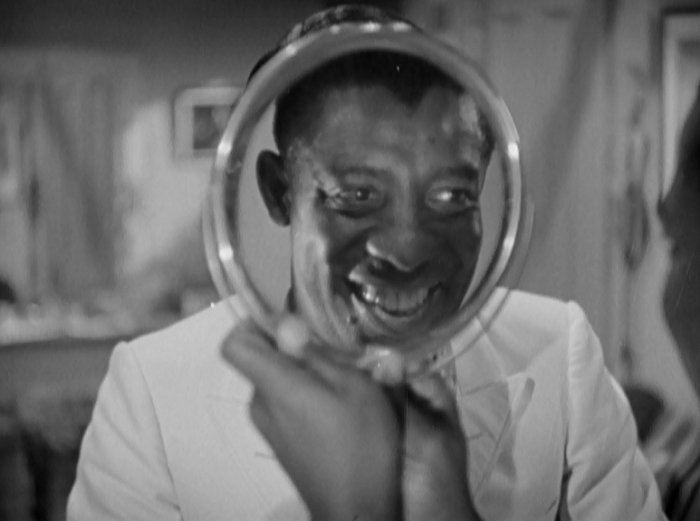
This is Sam, Thunder Horse’s valet and friend. Sam also functions to help make some blatant parallels between how the blacks have been treated vs. the Native Americans. This shot is rather strange in its focus on Sam, but the scene’s focus on Thunder Horse’s popularity– with both audiences and especially the ladies– led to one simple conclusion. What reflects well on Thunder Horse, reflects well on Sam.
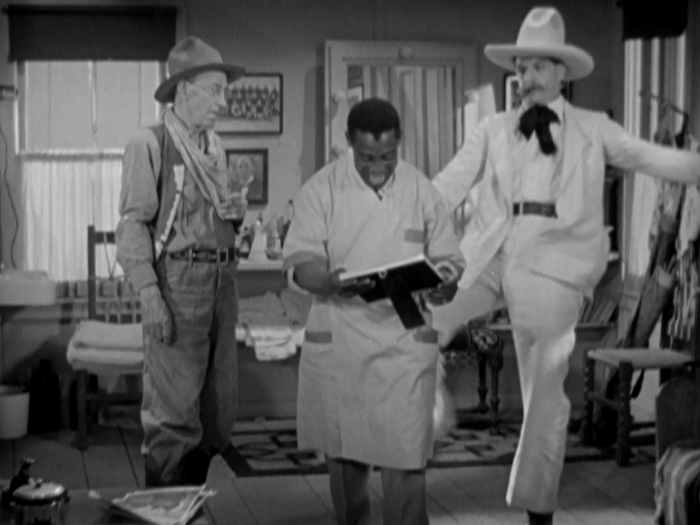
Thunder Horse successfully negotiates a raise with the white show owner, Dawson. Sam gets excited since that indicates a pay raise for him as well– another sign of a relationship of trust and respect– and Dawson repays him with a swift kick on the butt. Where he can’t do that to the Indian who is making him money, he doesn’t have to like it that a black man is lording his failure over him.
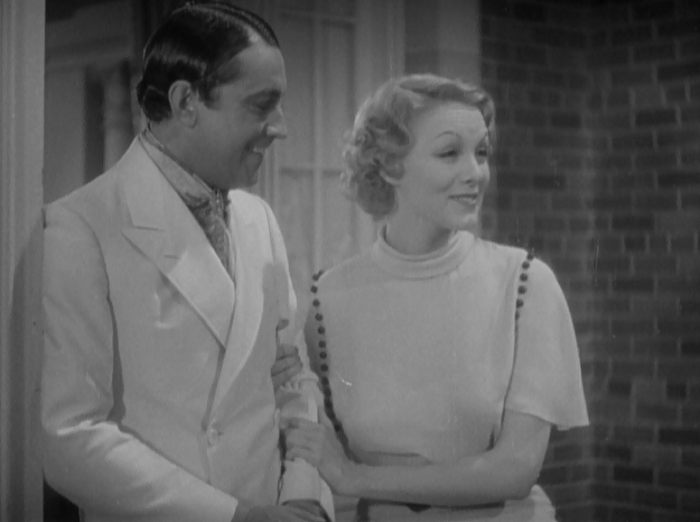
Norma (Claire Dodd) introduces Thunder Horse to the party she’s throwing at her mansion. While it’s obvious she’s stuck on Thunder Horse, it’s more obvious that its clearly a fetish for her.

The party of affluent white people deal out their enthusiastic response to this introduction.
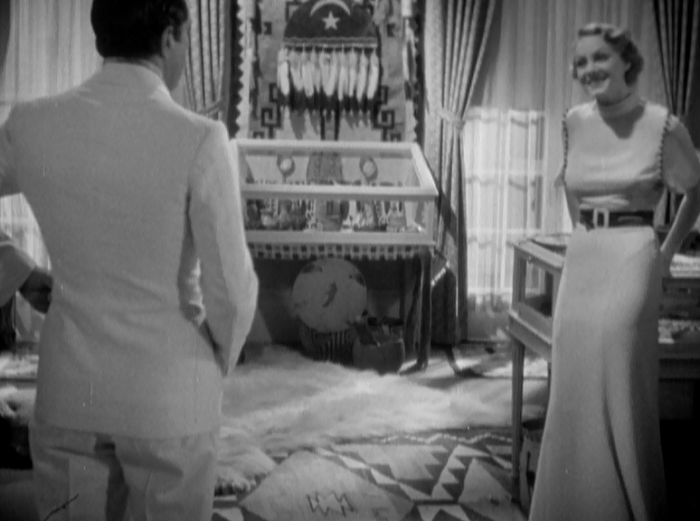
Did I mention a fetish earlier? In this scene we also discover how little Thunder Horse knows about his own culture; assimilating with the whites has essentially led to him buying into their myths about his culture, which he regards as merely a money making opportunity.
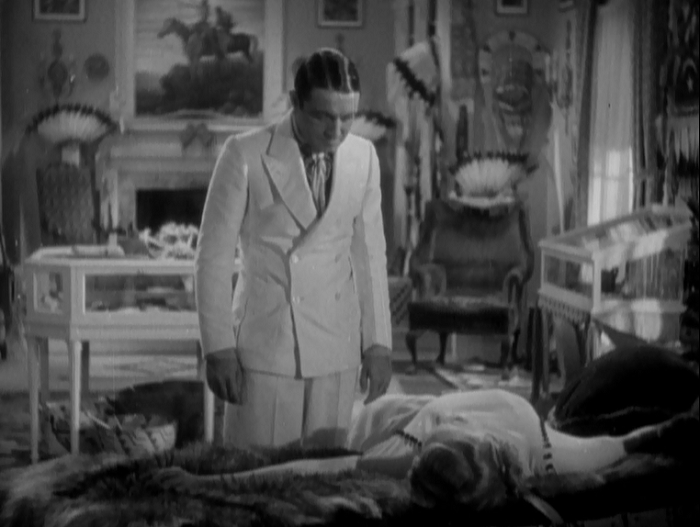
Well, and a making it with women opportunity.
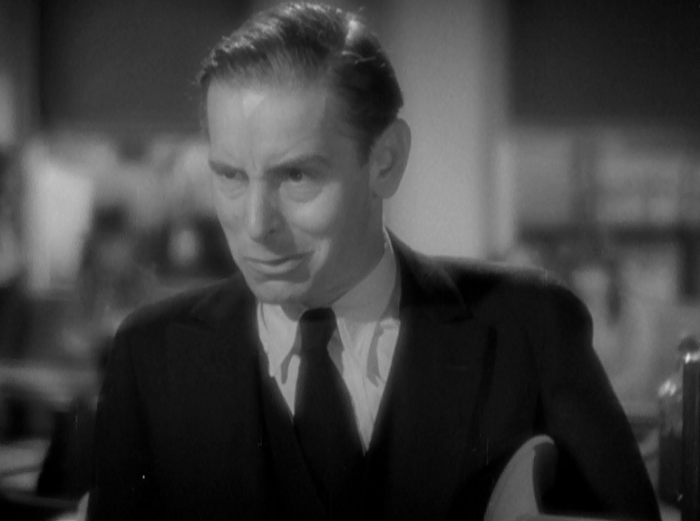
I’m going to skip ahead a bit to when Thunder Horse is on the reservation. The pre-Code era didn’t get away with everything, and assume the audience could pick up on some subtleties without explicitly mentioning it. So when you see Arthur Hohl’s performance full of ticks and forgetfulness, it’s not because the actor is crazy, but because the doctor he’s playing in the movie is a dope fiend.
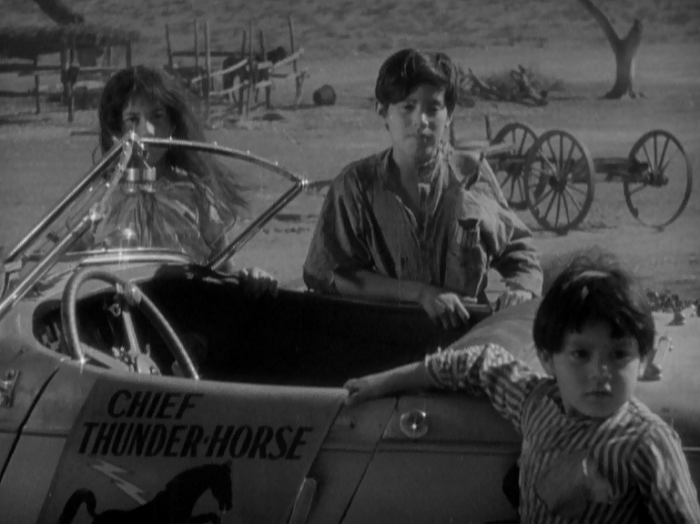
Thunder Horse’s brothers and sisters surround his car. On the reservation we soon come to meet the real Indians, a vast majority of whom are browbeaten to the point that all they can do is hope to work to death in peace. The kids here are in amazement of Thunder Horse’s sleek automobile in a place where most are still confined to horse and carriage.
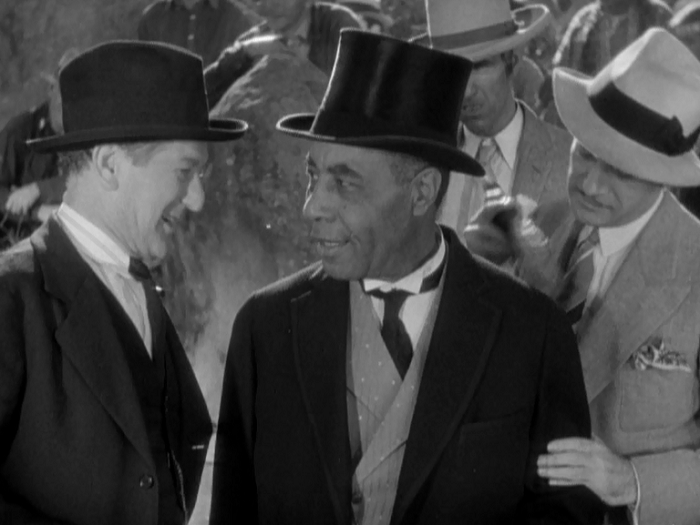
Thunder Horse discovers a black businessmen from the east arranging a large faked ceremony where he would be crowned an Indian chief in a phony ceremony to sell his tonic. This section of the movie is pointing out that things are so bad for the Indian, even the blacks are exploiting them! This also plays into the film’s constant use of contrasts between the different races it shows– white, black, red. There are the good and bad of all races, with the good– Thunder Horse, Sam, Cochran– all willing to sacrifice and stand up for what’s right, while the bad are happy to exploit or to be exploited for a large cash settlement. The difference between good and evil is whether or not your soul is for sale.
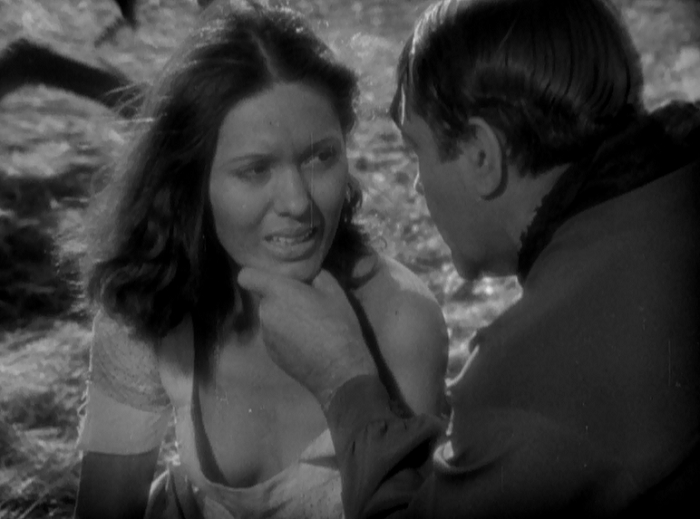
The film’s most shocking moment is Thunder Horse discovering that his sister has been raped during his father’s funeral. Like I mentioned above, eve pre-Code movies can’t actually describe or show what happened, and have to resort to the time honored tradition of the torn dress to get its point across. Also: while the film has a lot of nuance in terms of race, government, and tradition, none of these translate well to its portrayals of women. Jennie here seems to be mute except in one or two scenes, and mostly serves as a prop to spur action. Dvorak’s character isn’t much better.
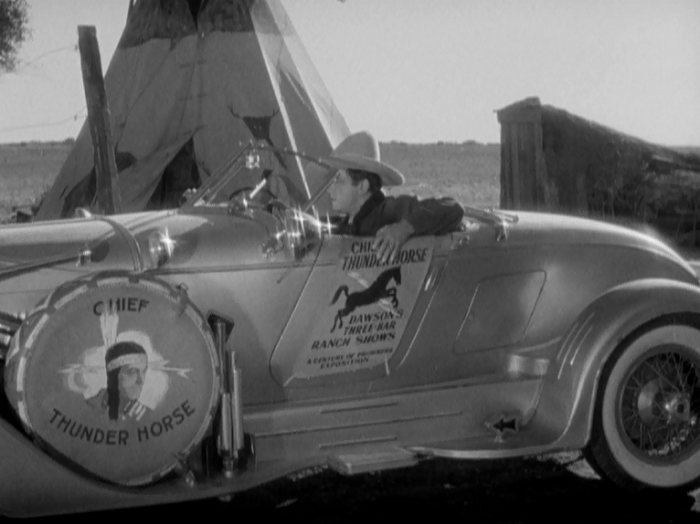
Look at that thing. It’s so ridiculously gaudy and silly, I almost wish it was blown up in the finale.
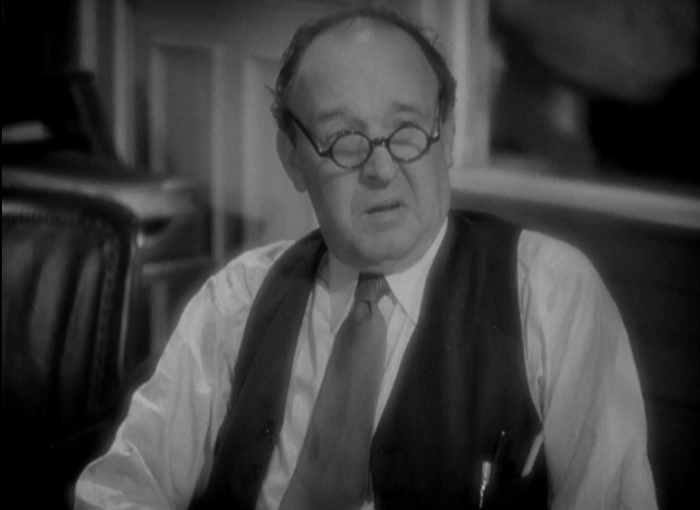
Our villain Quissenberry, who chisels from those under his protection. He notes that he’s been on the job for a long time now, which means he’s a relic of the 1920s politicians, who probably aren’t any audience member’s ideas of heroes at the moment. You almost have to admire just how thoroughly and transparently corrupt he is. He’s mostly seen behind a desk, in his office, or dictating to the court, as his authority is completely unchallenged most of the film outside of Thunder Horse. He also refers to Thunder Horse as a ‘bolshevik’, for what that’s worth.
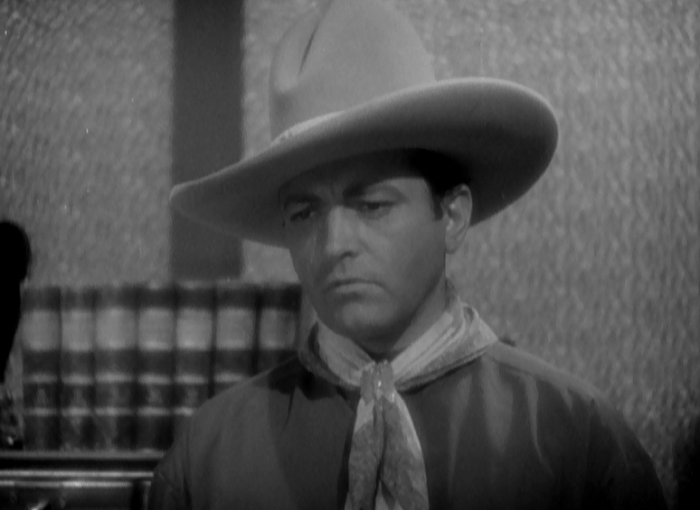
Thunder Horse wears this big goofy hat throughout most of the film. It took me a while to figure out why, but I think I got it. America’s always had a cultural fascination with the cowboys who will take the law into their own hands and take on the black hatted villains. The Indian in this film has become a cowboy– a hero for us to root for.
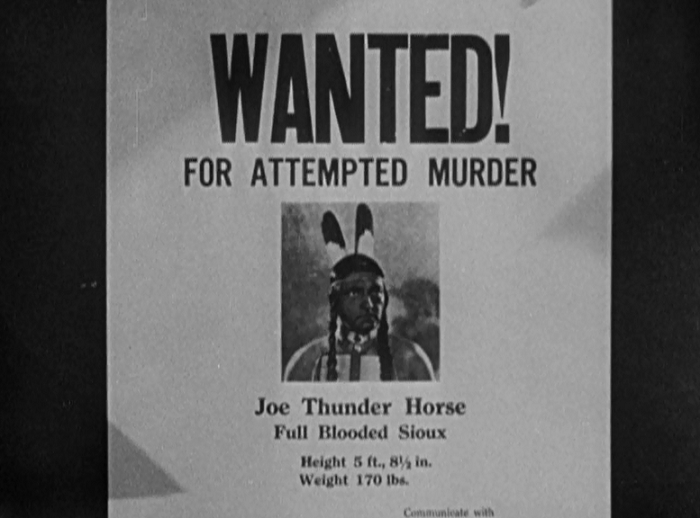
The wanted poster after Thunder Horse drags Shanks. It’s important to notice two distinguishing characteristics: the shot of him is in his more famous tribal gear, and his race is the biggest listed distinguishing characteristic in the film.
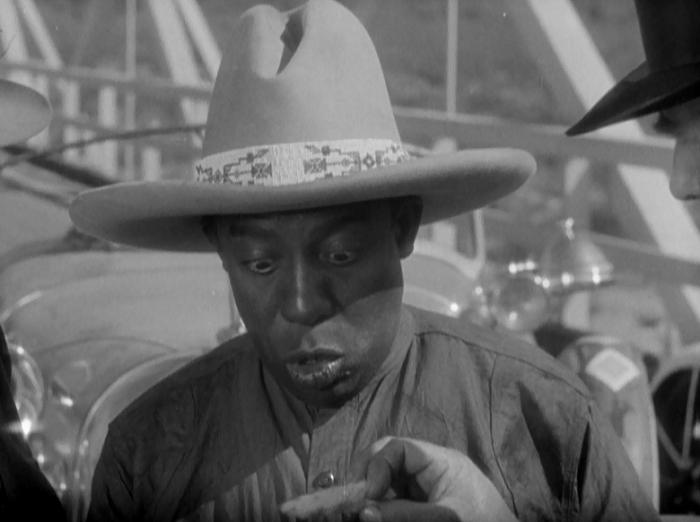
While dodging the law, Sam puts on the hat to fake out police on Thunder Horse’s trail. He acts like the exaggerated ‘negro’ personality often seen on screen at the time, and the white police officers buy his stupidity.
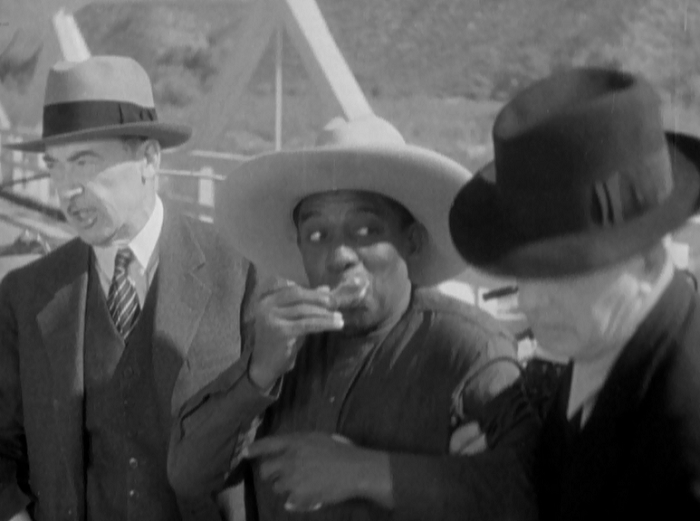
This quick moment at the end of that scene is something I love, where Sam kisses a lucky rabbit’s foot. He’s broken the character he temporarily took on for a half second to thank his good luck and wish Thunder Horse the best now that he’s completed his bit in helping him escape.
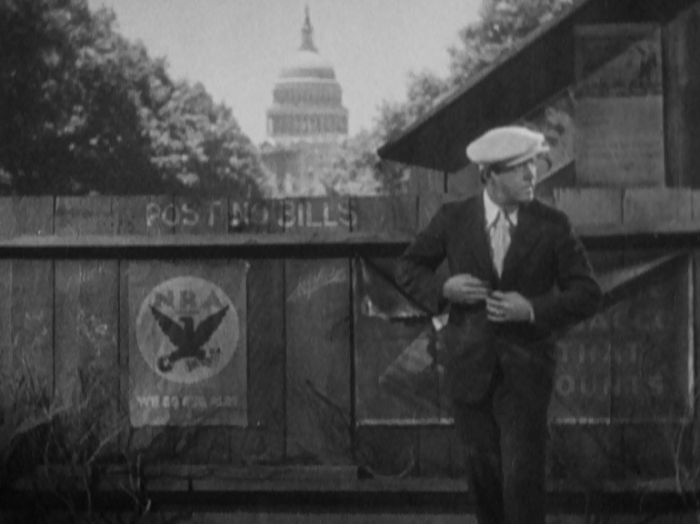
One of the best shots in the movie shows Thunder Horse’s arrival in the city. The poster there is for the NRA (National Recovery Administration), one of Roosevelt’s New Deal pieces that was helping in ending the Great Depression. Its presence indicates that Thunder Horse has entered Roosevelt’s territory, and that he’s going to find an administration open to the charges he’s about to lobby.
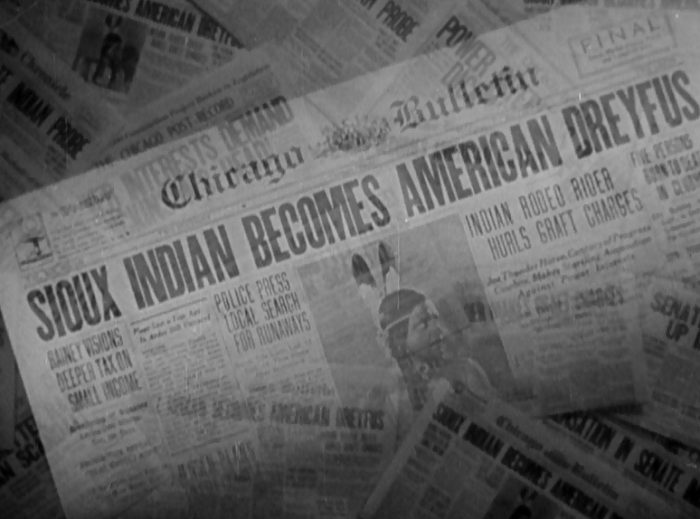
The Dreyfuss Affair was a case that divided France in the late 19th century. Here’s a link to read about it. What’s interesting about this headline is that it indicates that people were torn on both sides of the issue, though, considering the racism of the time, I guess that’s not too surprising. Hell, considering racism now, that’s not too surprising.
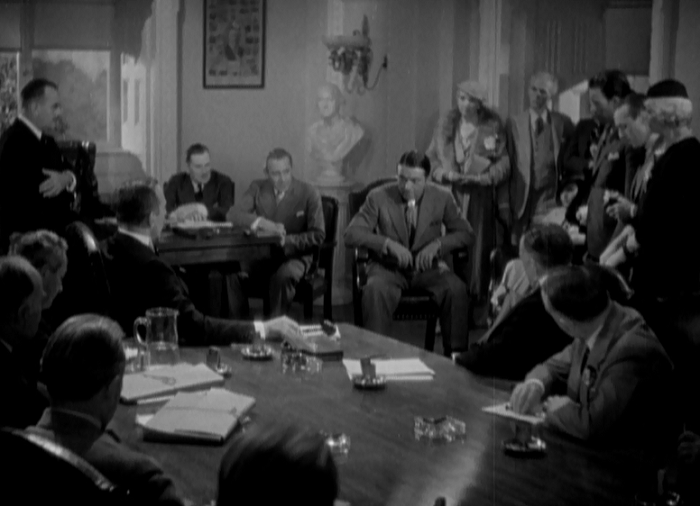
I just wanted to say that this is excellent composition.
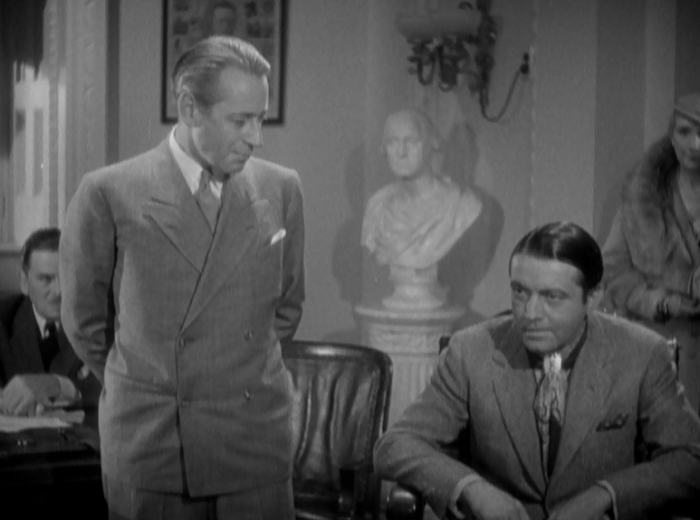
And that I don’t think that a bust of Washington (one of the American figures most commonly associated with freedom) being between Thunder Horse and the supportive Secretary of Indian Affairs is coincidental.
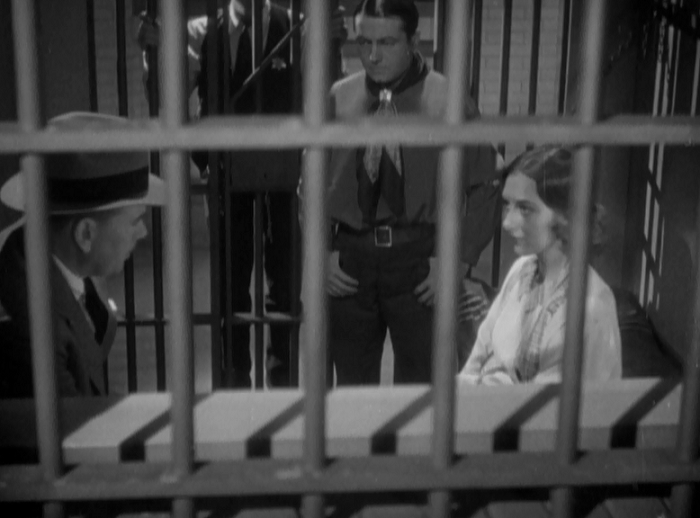
Thunder Horse is back on the reservation awaiting trial. I really like this shot because the bars in the foreground show that they’re trapped, but that extra horizontal bar puts Thunder Horse on a separate plane from the other two. They may be in there with him, but he’s the one who must stand alone against this injustice.
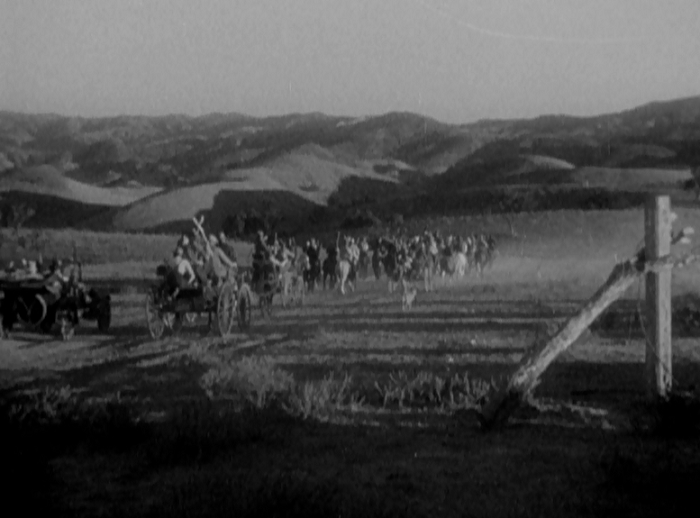
Earlier in the film we saw the recreation of the traditional Indian war march with feathered hats and every man on a noble steed. What we see is the reality of now, everyone in dirty, worn clothing, stumbling towards town to unleash their repressed fury.
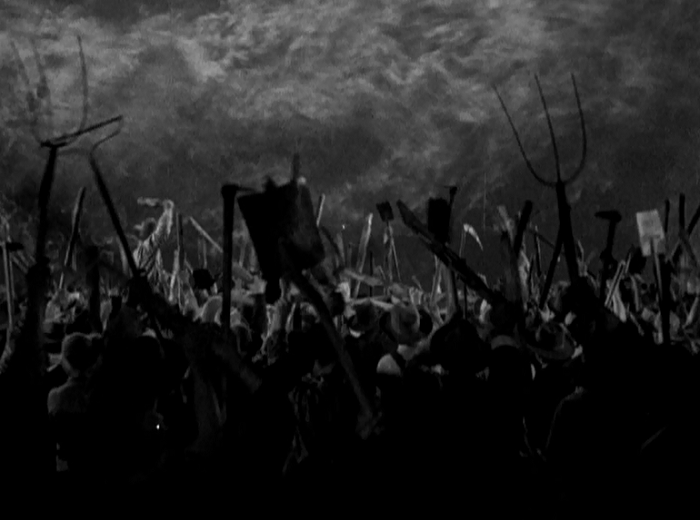
And instead of bows and arrows, the Indians only have farming implements. This is what they’ve been reduced to.
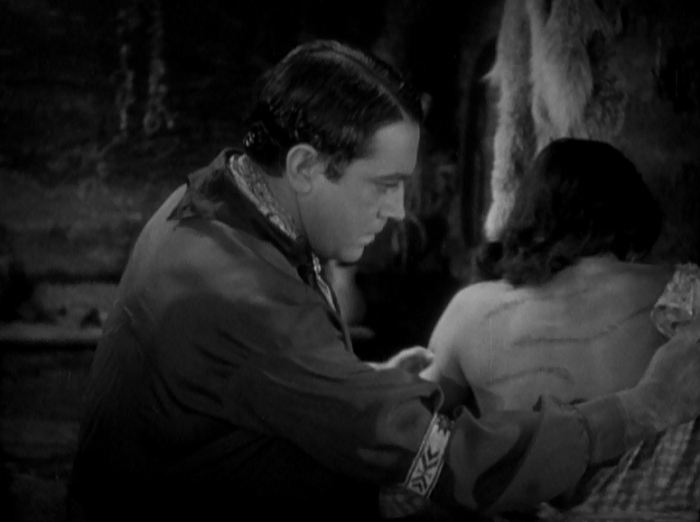
Thunder Horse finds Jennie again, with her dress torn again, and with a few new sadistic additions. The white man wasn’t just content with kidnapping her, but punishing her for speaking up.
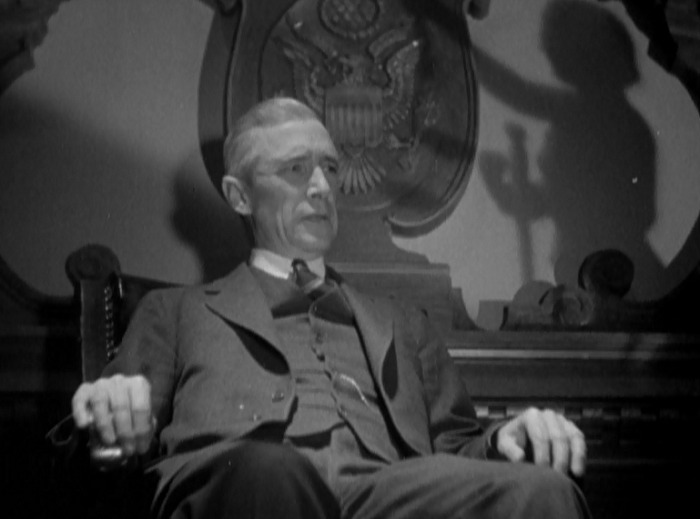
We don’t actually see any of the final trial, but merely the federal judge summing up how everything will be better and the crooks are being punished. He’s another idealized member of the Roosevelt-ian ideal, as the camera looks up at him with awe and the shadow of the statue of justice hangs over him, satiated.
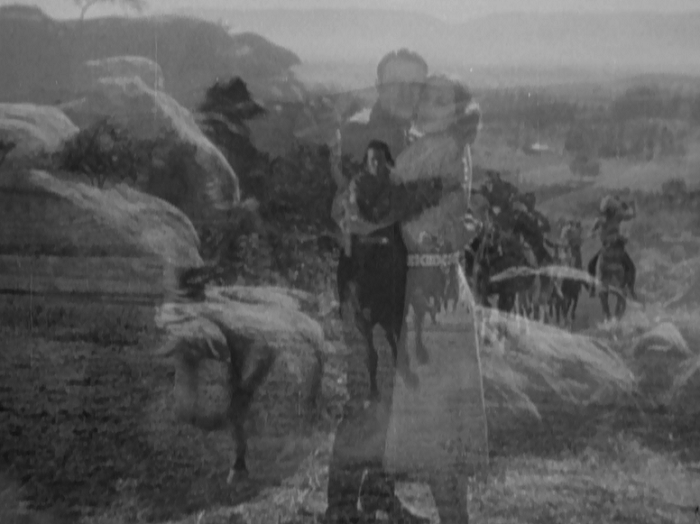
Thunder Horse and Lydia embrace and the screen superimposes those proud Indian herds once again, showing that his actions may have given the tribe the freedom to once again be a proud people. Notably, Lydia and Thunder Horse don’t actually kiss on the mouth during their final moments, and even awkwardly try to avoid it. I guess Warner Brothers had decided that they’d pushed enough boundaries for the day.
Trivia & Links
- The film’s plea for Indian self regulation and independence were timely, as both were being mimicked in the adaption of the Indian Reorganization Act (IRA) of 1934 was passed almost five months after this film’s release. The film’s portrayal of a proactive Commissioner of Indian Affairs who’s looking to curb the widespread exploitation of Native Americans is also based on the real life secretary John Collier. The IRA reversed widespread assimilation policies and restored the Indian’s ability to self govern as well as regain lost lands.
- Mordaunt Hall of the New York Times has a hard time swallowing Massacre‘s parable, finding the extent of the corruption unlikely and melodramatic. However, he does note, “The chief crook is an Indian agent known as Elihu P. Quissenberry, who being portrayed by that expert player, Dudley Digges, is almost too believable for comfort.”

Kind of a weird sort of The Searchers reversal, really.
- TCMDB is far more interested in behind-the-scenes gossip this go around, and talks about Ann Dvorak for half its article– which is fine if you watched this movie to learn more about Ann Dvorak, I guess. There’s also a bit about the film’s racial diversity:
Elsewhere, Warners did strive for a measure of authenticity for Massacre, to the point of hiring Luther Standing Bear as a technical advisor. The Oglala Lakota Sioux Chieftain had been among the first Native Americans to attend Pennsylvania’s Carlisle Indian Industrial School (alma mater of Olympic medalist Jim Thorpe) and was at the time the author of several books related to his childhood and Indian life and an occasional performer in such films as Paramount’s White Oak (1921) with William S. Hart and The Conquering Horde (1931) with Richard Arlen and Fay Wray, in which he was billed as Chief Standing Bear. He appears uncredited in Massacre, alongside such non-Native American actors as Iron Eyes Cody (an Italian American who made a career out of playing First Nationers) and African-American Noble Johnson, who played ethnics of every stripe (perhaps most notably as the native chief in King Kong, 1933) in a diverse career that stretched from 1915 to 1950.
- Since there are a great many people who do care about Ann Dvorak, you or they may try seeking out the blog Ann Dvorak: Hollywood’s Forgotten Rebel.
- I watched another documentary not to soon before watching this called Incident at Oglala (1992) about the murder of two FBI agents on a reservation in the 70s and the fallout. It’s an excellent film that shows that the tension between whites and Native Americans still hasn’t gone away.
Primary Sources
Thanks to Lantern, there are hundreds of issues of fan magazine and industry journals from the pre-Code era available for free. Here are some related articles; click on the ‘View Full Sized Image’ in the bottom right to view!
Awards, Accolades & Availability
- This film is part of Warner Archive’s Forbidden Hollywood, Volume 6 collection, which also contains Mandalay and Downstairs. It’s available on Amazon and Warner Archive, and can be rented from Classicflix.
 |
Comment below or join our email subscription list on the sidebar!Home | All of Our Reviews | What is Pre-Code? |
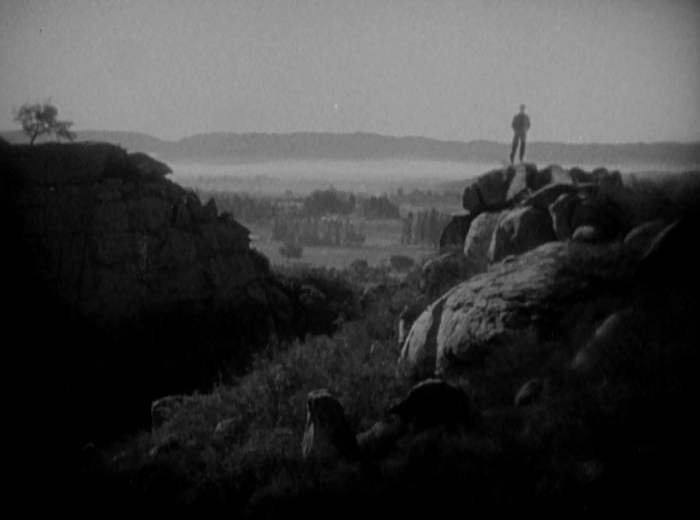


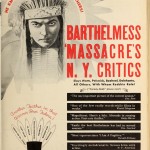
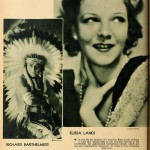
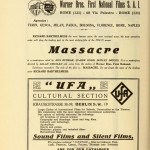




8 Comments
jameswharris · November 25, 2013 at 7:59 am
I joined Classicflix to get this movie, and others that you’ve been reviewing. Unfortunately, it’s on short wait.
Danny · November 25, 2013 at 11:55 am
Yeah, I use Classicflix myself, but it’s a pain in the ass to get something you want to see immediately because they have so few copies of so many things. Oh well, hope it clears up for you soon!
justjack · November 28, 2013 at 10:33 am
I will remember this movie thanks to your review, Danny. Who can say no to a sensationalistic Warner Brothers’ social commentary flick? That’s Pre-Code?
It may just be me, but based on your description, I’m picking up bigtime whiffs of the story of Moses here.
Danny · November 29, 2013 at 10:24 am
Huh, I hadn’t picked up on that, but there’s definitely a lot of Biblical truth to the story about helping the poor and disadvantaged and leading them from evil oppressors. Of course, the movie is also pretty skeptical about forcing religion on others, so I don’t know if the filmmaker’s would agree with you!
justjack · November 29, 2013 at 11:42 am
I’m sure you’re right, Danny, but there’s also that thing about originally identifying yourself as one of the privileged, and then having your eyes opened to your true background, and not only leading the disadvantaged but embracing your true birthright as one of them.
Good luck with the grad school push, Danny!
Danny · November 29, 2013 at 12:11 pm
That’s an great observation, Jack. I will admit that most of my memories of Moses comes from watching The Ten Commandments with my parents when I was a kid, so I may be a bit shaky on the story.
And thanks for the well wishes!
Jakki Ford · December 2, 2016 at 11:31 pm
Wonderful insightful film “MASACRE”!! So surprising and groundbreaking for the times to view a 1934 Film regarding racial bigotry in America, that still goes on today!! BRAVO to the screenwriter, Director, Studio and cast for bringing this crisis in America to the forefront so that citizens could become socially and politically aware of Racial hatred of Indians and Blacks being abused and exploited by whites! Political, religious, racist, and economic battles still being fought today!! A Rare Film regarding injustice and the white man’s Laws. Gives me chills to think of the Indians yet again having to fight at STANDING ROCK to stop GREEDY corporate interests ABOUT to poison waters for a dangerous pipeline that threatens us ALL!!
thane62 · January 28, 2019 at 1:13 am
What a fantastic review. Never heard of this before. I was looking up Barthelmess for my write-up of “Only Angels have Wings”–this title jumped out at me. Followed it your site–which never fails to blow me away. Great stuff!
Comments are closed.